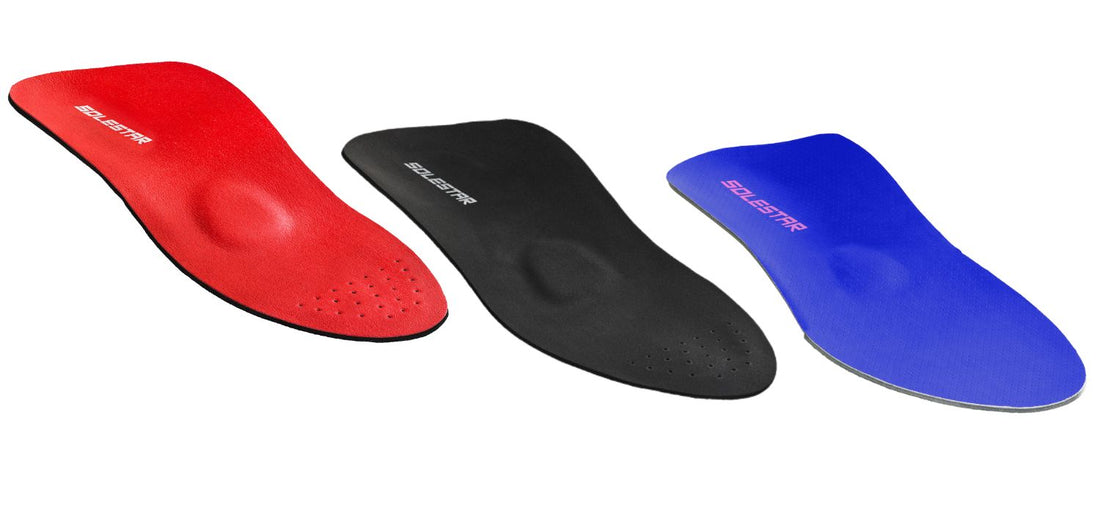
What is the difference between inserts and insoles?
When it comes to foot comfort, pain prevention and boosting your performance, you’ve probably come across the terms "insoles" and "inserts" . But are they the same thing?
Spoiler alert: they’re not!
While they both are placed inside your shoes and aim to increase comfort and performance as well as preventing pain, there are some key differences between insoles and inserts that you should know about. In this guide, we’ll break it all down for you—types, uses, and how they compare—so you can pick the right one for your feet.
What Are Insoles?
Insoles are padded components placed inside the shoe to provide additional comfort, support or cushioning. They help to improve the fit of the shoe, reduce foot fatigue, and can be used to address specific foot conditions or enhance overall comfort.
Here are the most common types you’ll find:
- Sport Insoles: Designed for sports shoes, depending on the sport you are doing, they provide different levels of stability. Furthermore, they increase comfort and performance and prevent common complaints. Just like our Solestar sport insoles, designed to support you in every move.
- Support Insoles: Made to offer extra arch support and are great if you’re on your feet a lot.
- Comfort Insoles: Shaped for normal shoes, these insoles are soft and cushy and are designed to increase the comfort in your shoes all day long.
- Gel Insoles: Composed with gel material, these are perfect for reducing pressure on your heels and toes.

What Are Inserts?
Inserts are additional components or pieces placed inside the shoe, to improve functionality, comfort, or performance. They are often removable and can be customized for specific needs and cover areas like the arch or heel to provide added support or cushioning.
Here are the most common types you’ll find:
- Custom Inserts: Made for your feet by a podiatrist for individual needs.
- Orthotic Inserts: Doctor-recommended for foot conditions like plantar fasciitis or flat feet.
- Cushion Inserts: Designed to add extra padding for a plushy feel.
- Heel Inserts: Are small pads that lift your heel or stop slippage.

Key Differences Between Inserts and Insoles
Summary of the main differences between Insoles and Inserts:
|
Feature |
Insoles |
Inserts |
|
Built-In or Add-On? |
Comes with the shoe or separately if they are sport insoles. |
Bought separately |
|
Purpose |
Comfort, support or performance for the whole foot |
Specific area of support or correction |
|
Used |
Replaces original Insole |
Addition to insole |
|
Durability |
Wears out with the shoe and can be replaced. |
Can be replaced or reused |
Insoles or Inserts, what suits you?
Choosing between insoles and inserts depends on your needs and feet:
-
Inserts: Just need a small, partial correction piece or heel lifting, than Inserts might be good for you
- Insoles: Looking for something that stabilizes your whole foot, prevents pain and boosts performance as well as Comfort, you should go with Insoles. They are covering the foot completely and fit perfectly in your shoe (in the correct size according to your shoe).
Additional tip for worn-out shoes: Replace your insole, with a new Insole that offers stability and comfort in older shoes, or make your shoes last longer with the correct insole.
Conclusion
Improving your foot stability, comfort, overall performance or other things is always a good idea. As this invest will most likely support your feet with every step you take.
Whether you opt for insoles or inserts is an individual choice. Just keep in mind that if you want your whole foot to be support always go with insoles, if due to lack of space inside the shoe, or you just need partial support you might go with inserts.

